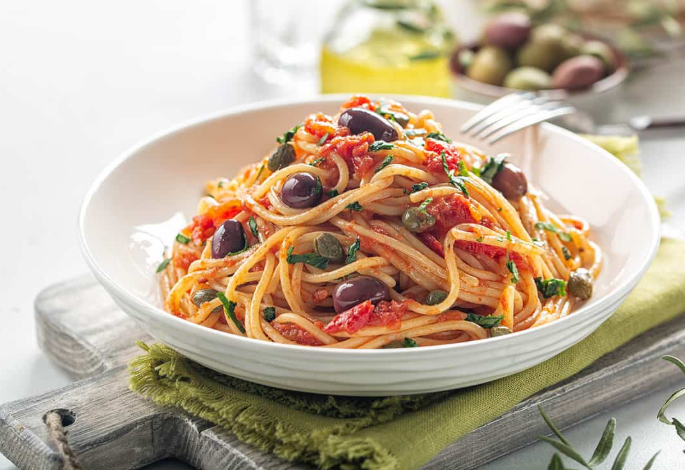When it comes to Italian food, most Americans think of pizza, spaghetti, and maybe the occasional lasagna. But Italy’s culinary scene is way deeper — and way more exciting — than the red-sauce standards we grew up with. From rustic street eats to melt-in-your-mouth cured meats, there’s a whole world of incredible dishes beyond the basics. And honestly? Some of them might just blow your mind. If you’re ready to give your taste buds a serious upgrade, here are five traditional Italian foods you need to put on your must-try list ASAP.
1. Aged Coppa Ham
Let’s start strong: aged coppa ham is a total game-changer. This isn’t your average sandwich meat. Coppa comes from the pork neck and shoulder, seasoned with a mix of spices like black pepper and sometimes a hint of clove, then left to cure slowly for several months. During this time, it transforms into something rich, savory, and just slightly spicy — a flavor bomb that’s tender enough to almost melt on your tongue.
The aging process is what makes it so special. The meat develops complex, deep flavors that you just don’t get with regular ham or prosciutto. It’s usually sliced paper-thin, letting that silky, marbled texture shine. If you want to experience it without booking a flight to Italy, you can find aged coppa ham from specialty Italian brands like Casa Rinaldi here in the U.S. Just don’t blame us if you become obsessed.
How to try it: Look for it at upscale grocery stores, Italian markets, or charcuterie boards at good wine bars.
2. Supplì
If you’ve ever thought, “Why isn’t there a food that’s just crunchy fried rice with cheese inside?” — Italy heard you. Supplì is exactly that: Roman fried rice balls stuffed with mozzarella, usually coated in breadcrumbs and deep-fried until crispy.
The outer shell is golden and crunchy, but inside? You get warm, creamy rice (typically cooked with tomato sauce and sometimes meat) with a stretchy mozzarella center. It’s basically the Italian cousin of mozzarella sticks — but way more satisfying.
Fun fact: The name “supplì” comes from the French word for “surprise,” which is what you get when you bite into that gooey middle. Supplì is classic Roman street food, often sold in pizzerias and takeaway shops.
How to try it: Some Italian restaurants in the U.S. now feature supplì as appetizers. Look for Roman-style pizza places or food trucks at Italian festivals.
3. Porchetta
If you think you know good roast pork, porchetta is here to raise the bar. This legendary dish involves deboning an entire pig, seasoning it generously with garlic, rosemary, fennel, and other herbs, then rolling it up and slow-roasting it until the skin turns crackly and the inside stays unbelievably juicy.
Porchetta isn’t just food — it’s an event. In Italy, it’s often sold at street fairs, open-air markets, and festivals, with vendors carving thick slices right onto bread for epic sandwiches.
The contrast between the crispy skin and tender meat is next-level. It’s the ultimate balance of savory, fatty, crunchy, and herby flavors that somehow works perfectly together without feeling heavy or greasy.
How to try it: In the U.S., porchetta has popped up at artisan sandwich shops, Italian delis, and even some high-end brunch spots. Look for “porchetta sandwiches” on menus — if you see one, don’t hesitate.
4. Cacio e Pepe
Minimal ingredients. Maximum flavor. Cacio e pepe (pronounced “kah-cho eh peh-peh”) proves that sometimes, less really is more. This Roman pasta dish sticks to just three ingredients: pasta, Pecorino Romano cheese, and black pepper. That’s it — no cream, no butter, no nonsense.
The magic is in the technique. By using starchy pasta water, the cheese melts into a silky, creamy sauce that clings to every strand of spaghetti or tonnarelli. The result is a dish that’s salty, peppery, cheesy, and way more luxurious than it has any right to be for something so simple.
Legend has it that cacio e pepe was the go-to meal for shepherds roaming the Roman countryside, since cheese and pasta were easy to carry and didn’t spoil quickly.
How to try it: Good Italian restaurants often have cacio e pepe on the menu — and it’s usually a sign they know what they’re doing if they can nail this deceptively simple dish. Or, try making it at home — just don’t skimp on good Pecorino.
5. Panna Cotta
Finally, let’s talk dessert. If you’re someone who always needs a sweet ending (no shame), you have to experience panna cotta. The name means “cooked cream” in Italian, and that’s basically what it is: cream gently heated with sugar and a little gelatin until it sets into the perfect wobble.
Texture-wise, panna cotta is pure bliss — smooth, delicate, and just firm enough to hold its shape. It’s usually topped with berries, caramel, coffee sauce, or even chocolate for extra drama.
What’s cool about panna cotta is how it feels luxurious without being heavy or overly sweet. It’s the kind of dessert that doesn’t hit you like a brick at the end of a meal — it just floats you gently into food coma paradise.
How to try it: Many Italian restaurants feature panna cotta on their dessert menu. You can also find easy recipes online if you want to whip up a batch at home — it’s way less complicated than it looks.
Conclusion
Italian food is so much bigger than just pizza and spaghetti. The next time you’re at an Italian market, a good restaurant, or traveling abroad, skip the usual suspects. From aged coppa ham to the silky perfection of panna cotta, there’s a universe of flavors out there — and your taste buds deserve the real adventure.
